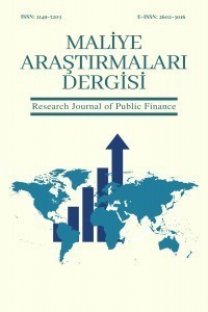Lojistik Maliyetler ve Lojistik Performans Ölçütleri
Ülkeler/firmalar açısından rekabet edebilirliğin temel belirleyicilerinden biri olarak lojistik kabiliyetlerin gelişmesi ile ortaya çıkan lojistik yetkinlik, ticaretin kolaylaştırılmasına ve çeşitlendirilebilmesine imkan sağlamaktadır. Lojistik faaliyetlerde verimliliğinin artırılması, lojistik süreçlerdeki değişkenliğin ve belirsizliğin azaltılması, tedarik süresinin kısalması, nihai ürün birim maliyetlerinde düşüş ve rekabet avantajı yakalanması, lojistik performans ölçütü olarak nitelenen iktisadi, coğrafi ve kurumsal koşullarla bağlantılıdır. Bu çalışmada, ilgili literatüre dair kapsamlı değerlendirmelerle ülkelerin/bölgelerin lojistik performansı üzerinde etkili olan ve lojistik sektörünün büyüklüğünü yansıtan parametreler sınıflandırılmakta ve tartışılmaktadır. Temel performans göstergeleri, faktör koşulları, iktisadi koşullar ve dış çevre koşulları şeklinde tarafımızca üç gruba ayrılmıştır.
Anahtar Kelimeler:
Lojistik Maliyetler, Lojistik Kabiliyetler, Lojistik Performans Ölçütleri
Logistics Costs and Logistics Performance Measurements
As a deriving force of competitivenes for both firms and countries, rising logistics competence resulting from development of logistics capabilities makes trade facilitation and diversification possible. Increased efficiency of logistics operations, reduced volatility in the logistics process and uncertainty and arrival time, lower unit costs and increasing competitive advantage are closely related to the so called logistics performance metrics of economic, geographical and institutional conditions. In this study, with a comprehensive evaluation of relavant literature, parameters reflecting the size of logistics sector and effective on logistics performance of countries/regions were classified and discussed.Basic performance indicators divided to three groups as factor, economics, environmental conditions
___
- Agility(2011),http://www.agilitylogistics.com/EN/Documents/Agility_Down loads/2011 _Emerging_Markets_Logistics_Index.pdf/, Erişim Tarihi: 19.09.2013.
- Agility(2012),http://www.agilitylogistics.com/EN/Documents/Agility_Down loads/2012_ Emerging_Markets_Logistics_Index.pdf/, Erişim Tarihi: 19.09.2013.
- Aoyama, Yuko, Samuel Ratick and Guido Schwarz (2006), “Organizational Dynamics of the U.S. Logistics Industry: An Economic Geography Perspective”, The Professional Geographer, Vol.58(3), pp.327-340.
- Bakshi, Gurdip, George Panayotov and Georgios Skoulakis (2011), The Baltic Dry Index as a Predictor of Global Stock Returns, Commodity Returns, and Global Economic Activity, http://papers.ssrn.com/sol3/Delivery.cfm/SSRN_ID1749510_code533 61.pdf?abstractid=1747345&mirid=1/, Erişim Tarihi: 19.09.2013.
- Bayraktutan, Yusuf ve Mehmet Özbilgin (2014), Lojistik Merkez Kocaeli, Proje Raporu, KOTO&MARKA Y., Kocaeli.
- Bayraktutan, Yusuf, Şevket Tüylüoğlu ve Mehmet Özbilgin (2012), “Lojistik Sektöründe Yoğunlaşma Analizi ve Lojistik Gelişmişlik Endeksi: Kocaeli Örneği”, Uluslararası Alanya İşletme Fakültesi Dergisi, Cilt.4(3), ss.61-71.
- Bonilla, David and Nihan Akyelken (2011), “Vision, Freightvision – Sustainable European Freight Transport 2050 Forecast”, Vision and Policy Recommendation, Eds: Stephan Helmreich · Hartmut Keller, Springer, pp.127-134.
- Braithwaite, Alan (2007), Performance Measurement and Management in the Supply Chain, in Donald Waters, Global Logistics: New Directions in Supply Chain Management, 253-272, Kogan Page, London.
- Caplice, Chris and Yossi Sheffi (1994) A Review and Evaluation of Logistics Metrics, The International Journal of Logistics Management, Vol.5(2), pp.11-28.
- Christopher, Martin (2005), Logistics and Supply Chain Management Creating Value-Adding Networks, Pearson Education Ltd., UK
- Cognizant (2010), Performance Management in the Transportation and LogisticsIndustry,http://www.cognizant.com/InsightsWhitepapers/Pe rformance-Management.pdf/, Erişim Tarihi: 15.06.2014.
- CSCMP (2015), 26th Annual State of Logistics Report, CSCMP, USA.
- Frazelle, Edward (2002), Supply Chain Strategy: The Logistics of Supply Chain Management, McGraw-Hill, USA.
- Gunasekarana, A., C. Patelb, Ronald E. McGaughey (2004) “A Framework for Supply Chain Performance Measurement”, International Journal Production Economics, Vol.87, pp.333-347.
- Hausman, Warren H., Hau L. Lee and Uma Subramanian (2005), “Global Logistics Indicators, Supply Chain Metrics, and Bilateral Trade Patterns”, Policy Research Working Paper, No: 3773, World Bank.
- Hugos, Michael (2003). Essentials of Supply Chain Management, John Wiley & Sons Inc., USA.
- Ivanov, Dmitry, Boris Sokolov and Joachim Kaeschel (2010), “Integrated Adaptive Design and Planning of Supply Networks”, Advanced Manufacturing and Sustainable Logistics, Eds: Wilhelm Dangelmaier, Alexander Blecken, Robin Delius, Stefan Klöpfer, Springer, pp.152- 163.
- Krauth, Elfriede, Hans Moonen, Viara Popova and Martijn Schut (2005), “Performance Measurement and Control in Logistics Service Providing”, International Conference on Enterprise Information Systems, Vol.2, pp.239-247.
- Kumar, Sundar S. (2013), Are You Measuring the Right Metrics to Optimize Logistics Processes?, http://www.genpact.com/insight/are-youmeasuring-the-right-metrics-to-optimize-logistics-processes/ Erişim Tarihi: 20.05.2015.
- Lambert, Douglas M., James R. Stock and Lisa M. Ellram (1998), Fundamentals of Logistics Management, Irwin McGraw-Hill, USA.
- Lambert, Douglas M., Terrance and L. Pohlen (2001), Supply Chain Metrics, The International Journal of Logistics Management, Vol.12(1), pp.1-19.
- Landers, Thomas L., Alejandro Mendoza and John R. English (2008), “Logistics Metrics”, Introduction to Logistics Engineering, Ed. Don Taylor, CRC Press, USA.
- McKinnon, Alan (2007), “Road Transport Optimization”, Global logistics: New Directions in Supply Chain Management, Ed. Donald Waters, pp.273-289, Kogan Page, UK.
- Melnyk, Steven, A., Douglas M., Stewart, Morgan Swink (2004), “Metrics and Performance Measurement in Operations Management: Dealing With The Metrics Maze“, Journal of Operations Management, No.22, pp.209-217.
- NSDC (2009), Human Resource and Skill Requirements in the Transportation, Logistics, Warehousing and Packaging Sector (2022)-A Report, http://www.nsdcindia.org/pdf/ transportation-logistics.pdf/, Erişim Tarihi: 02.02.2014.
- Rantasila, Karri and Lauri Ojala (2012), “Measurement of National-Level Logistics Costs and Performance”, ITF Discussion Paper, No.2012-4.
- Rodrigue, Jean-Paul, Brian Slack and Claude Comtois (2006), The Geography of Transport Systems, Routledge, New York.
- Rodrigue, Jean-Paul, Brian Slack and Claude Comtois (2013), Liner Shipping Connectivity Index and Container Port Throughput, http://people.hofstra.edu/geotrans/eng/ch3en/conc3en/li ner_shipping_connectivity_index.html/, Erişim Tarihi: 15.04.2014
- Rushton, Alan, John Oxley and Phil Croucher (2000), Handbook of Logistics and Distribution Management, Kogan Page Limited, UK.
- Rushton, Alan and Steve Walker (2007), International Logistics and Supply Chain Outsourcing : From Local to Global, Kogan Page Ltd., UK.
- Straube, Frank, Shihua Ma and Michael Bohn (2008), Internationalisation of Logistics Systems How Chinese and German Companies Enter Foreign Markets, Springer.
- Waters, Donald (2007), Trends in the Supply Chain, Global Logistics: New Directions in Supply Chain Management, pp.1-20, Kogan Page, UK.
- World Bank (2010), Connecting to Compete 2010: Trade Logistics in the Global Economy The Logistics Performance Index and its Indicators, Washington, DC.
- World Bank (2012), Connecting to Compete 2012: Trade Logistics in the Global Economy The Logistics Performance Index and its Indicators, Washington, DC.
- Zorlu, Fikret (2008), “Türkiye Lojistik Coğrafyası”, Planlama, Sayı.43, ss.39-60.
- ISSN: 2149-5203
- Yayın Aralığı: Yılda 2 Sayı
- Başlangıç: 2015
- Yayıncı: PESA
